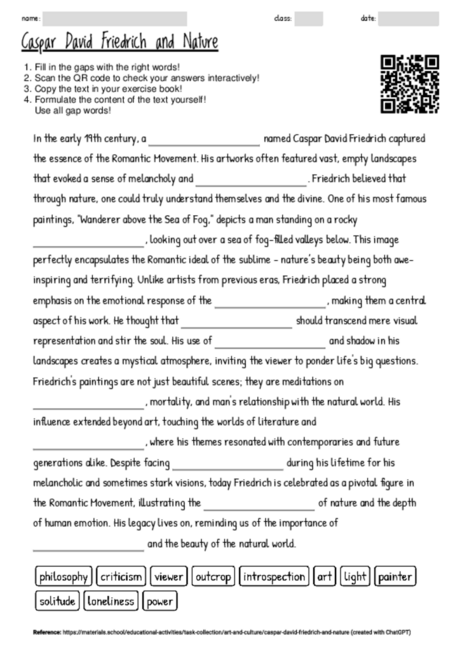Caspar David Friedrich and Nature
The cloze text on Caspar David Friedrich serves as an effective tool for engaging students in the Romantic Movement, particularly in highlighting the role of emotion, nature, and the individual's experience. By focusing on a central figure like Friedrich, the text humanizes the broader artistic movement, making it more accessible and relatable to students. The use of cloze technique encourages active reading and comprehension, as students must critically engage with the text to fill in the blanks. This active participation helps to reinforce key concepts and vocabulary related to the Romantic era, such as 'sublime', 'solitude', and 'introspection'. Furthermore, the emphasis on the emotional response of the viewer and the artist's intent to stir the soul can spark discussions about personal interpretations of art and the subjective nature of beauty and emotion. This method of learning not only aids in the understanding of historical and cultural contexts but also fosters a deeper appreciation for art as a form of personal and collective expression. Additionally, the cloze text can serve as a springboard for creative assignments, encouraging students to create their own art or writing inspired by Friedrich's themes and techniques. Overall, this approach not only educates students about a key figure and period in art history but also engages their creativity and critical thinking skills.

